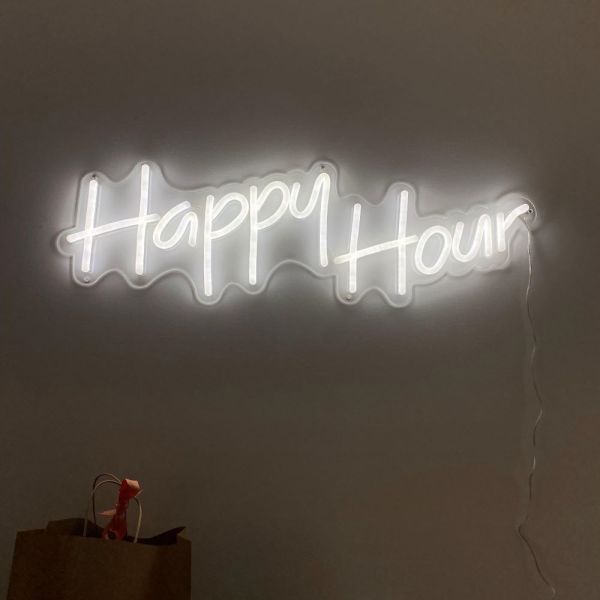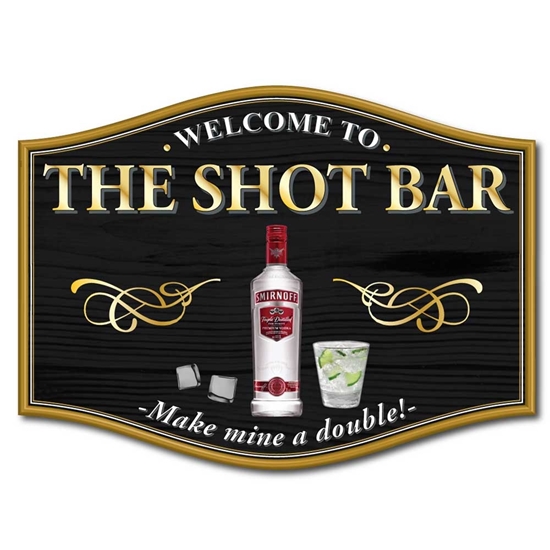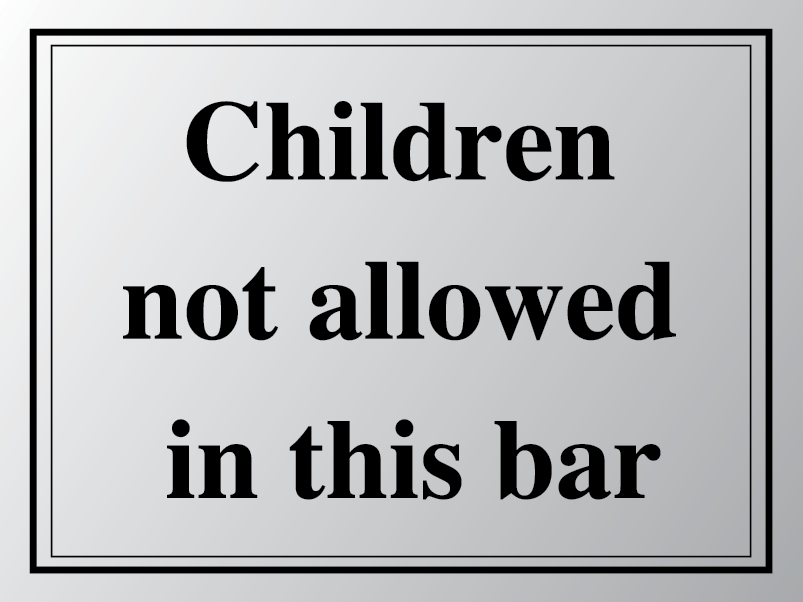Best Info On Picking Gin Bar Signs
Wiki Article
What Is The Material Used To Make Signs For Bars?
There are many different materials that bar signs can be constructed from. Each one has its own advantages and features, and each is designed to meet an aesthetic or specific need. Below is a brief overview of the most commonly used materials to create bar signage, and their distinctions: Wood
Characteristics: Natural, rustic, warm.
Durability Material is usually durable, however it could be impacted by moisture or may require regular maintenance.
Uses: Great for menu boards, a personalized name sign, or in bars with a rustic style.
Customization: It can also be stained or painted. It is easily customizable using a variety of finishes.
2. Metal
Characteristics: Sleek, modern, industrial.
Durability The material is extremely durable and weatherproof perfect for both outdoor and indoor usage.
Perfect for branding signs and robust informational signage.
Customization: It can be laser-cut or embossed. It is used for logos as well as intricate designs.
3. Neon
Characteristics: Bright, eye-catching, retro.
Durability The material is not as durable when compared to other materials, but can last a long time if properly maintained.
Uses: Excellent for branding and retro signs.
Because of the nature of neon tubing, customization is limited to text or outline shapes. Available in various shades.
4. Acrylic
Characteristics: Versatile, lightweight, modern.
Durability: Sturdy and resistant to fade, suitable for indoor use.
Uses: Ideal for creating modern, sleek signage, illuminated signs and detailed logos.
Customization: Laser-cutable or printed, or be layered in a three-dimensional effect. Available in multiple shades and textures.
5. Vinyl
Features: Flexible and easy-to-apply.
Durability: It is suitable for semi-permanent or temporary applications. Vinyl of high quality can be used outdoors.
Uses include window graphics, temporary advertisements, and custom-designed decals.
It is possible to customize the look of your home with printed patterns Cut-out shapes, as well as different colors. It's easy to put on and take off.
6. Chalkboard
Characteristics: Functional, rustic, interactive.
Long-term durability - Regular maintenance (cleaning and replacing chalk). The chalk can be damaged if it is not properly maintained.
Uses: Perfect for daily specials and menu boards. Also, they are great for interactive signs for places where information is frequently updated.
Customization: It is possible to customize with handwritten designs and messages. Frames can be made from various materials to increase durability and aesthetic appeal.
7. Glass
Characteristics: Elegant, sleek, modern.
Durability The material is brittle However, it can be strengthened. It can be used combination with backlighting to get a better effect.
Uses : Ideal to brand signs with premium quality, elegant signage, as well as window displays.
Customization: The item may be printed, painted, or etched. It is frequently used combination with lighting to create a striking result.
8. PVC (Polyvinyl Chloride),
Characteristics: Lightweight, versatile, cost-effective.
Durability Robust and resistant to weather perfect for indoor and outdoor use.
Uses : This material is typically used to create temporary signs for promotions and events.
The possibility of customization is there: print, paint, and cut into different shapes. It is available in a range thicknesses.
9. You can also learn more information about LEDs here.
Characteristics: Energy-efficient, bright, modern.
Durability: High durability and long-lasting. Suitable for continuous use.
Uses : Great for illuminating signs or creating dynamic lighting effects, and for modern branding.
Customization can be made available in a range of colors, and can be programmed for changing messages or animations.
10. Foam Board
The product's characteristics are: light weight, cheap and easy to use.
Durability: Not as than. It is ideal for temporary indoor use.
Ideal for temporary promotional events for informational signage, promotional events, and temporary events.
The possibility of personalization is available by printing or applying vinyl. Cut into different shapes.
Every material is distinct and has its own properties. This affects the look of bar signs as well as their durability and suitability for a variety of purposes and environments. The ideal material depends on its intended purpose the aesthetics of the sign, as well as budgetary restrictions. Take a look at the best read what he said for pub bar signs for blog recommendations including design your own bar sign, home garden bar signs, personalised metal bar signs, sign for garden bar, hanging pub signs for garden, staying inn sign, pub bar signs, personalised cocktail sign, personalised sign for bar, bar signs for home and more.

What Are The Differences Between Bar Signs In Terms Of Installation And Mounting?
There are a variety of ways of mounting and installing bar signs depending on their size, weight and the location. Here's a look at the mounting and installing methods: Wall-mounted signs
Attaching the wall directly.
Methods:
Anchors and Screws: Typically for larger signs (metal, wood) to make sure they are stable.
Adhesive strip: To be used for temporary or lighter installations as well as signs (foamboard, acrylic).
Brackets can be used to display signs that protrude over the wall.
Uses: Indoor decor, menu boards, directional signs.
Benefits: Secure, flexible, and allows for prominent display.
Disadvantages: Can damage walls, difficult to reposition.
2. Hanging Signs
The ceilings are suspended from the overhangs and ceilings.
Methods:
Chains: durable and adjustable ideal for large signs.
Cables: Modern designs often employ cables to create a more sleek appearance.
Rods: Provide a rigid support structure.
Uses: Ceiling decor, directional signs, overhead promotional signs.
The vertical space is very visible and the decorative options are endless.
Negatives: Must have secure ceiling anchors and can move in the event that it is not adequately stabilized.
3. Freestanding Signs
Characteristics Not tied to a structure.
Methods:
A-Frame is foldable and portable often used to promote on sidewalks.
Pedestal Stands: Stable base, ideal for indoor use.
Post and Panel Common for large permanent signs.
Uses: Outdoor advertising, indoor directional signs, promotional displays.
The lightweight and flexible design makes it easy to adjust.
The downside is that it can be heavy. Also, it requires lots of flooring space.
4. Window Signs
Features: Directly connected to windows.
Methods:
Suction cups: Easy to install, remove and use for smaller signs.
Adhesive Vinyl : It can be used for decals or graphics.
Static Cling is non-permanent and it is reusable. It's also easy to make use of.
Uses: Promotional messages, branding and operating hours.
Benefits: Increases the amount of window space. Visible from the outside.
Advantages: Limited by window size. It is susceptible to being affected by sunlight.
5. Signs that have Backlit Edge-Lit and LEDs
Features: Include lighting into the sign's structure.
Methods:
Wall Mounting With Electrical Connections. Requires electrical connection and secured attachment.
Suspended by Power Cables Hanging technique is combined and integrated lighting.
Uses for: Menu boards, high-visibility branding, and decorative elements.
Benefits: Better visibility, attractive illumination.
Installation is more complicated and requires electrical work.
6. Temporary & Portable Signs
Designed with easy installation and removal with ease in mind.
Methods:
Pop-up Stands: Compact and lightweight.
Banner Stands: Roll-up or retractable designs.
The uses include: events, promotions and seasonal decorations.
Benefits: Ease of transport, quick setup.
Disadvantages Less durable and less solid.
7. Magnetic Signs
Magnetic force used to secure.
Methods:
Magnetic Strips: Adhered on the reverse of the sign.
Magnetic Boards: Sign attaches to a metal surface.
Uses: Menu boards and temporary announcements.
Advantages: Simple to install and remove without the need for permanent fixtures.
Disadvantages : Limited to areas with magnetic properties, they are less secure.
8. Projection Signs
Specifications: Light is used to show images and text.
Methods:
Projectors mounted: They can be easily hung on ceilings or walls.
Portable Projectors : Placed on stands or on other surfaces.
Utilized for: Promotions, events Displays that are dynamic.
Features: Easy to alter content. There is no need for physical signs.
Advantages: Needs a controlled lighting system dependent on the quality of the projector.
Considerations for mounting and installation
Size and weight
The heavy signs (Heavyweight): They require stronger mounting solutions such as screws and bolts.
Light Signs: Can use simpler methods like suction cups or adhesive strips.
Durability
Permanent Signs: Use more secure and long-lasting mounting methods.
Temporary signage: Choose methods that make it easy to move and relocate the sign.
Location
Indoor: Less concern with weather resistance, greater ability to adapt materials and methods.
Outdoor: Materials and mounting should be weather-resistant to endure the elements.
Aesthetics
Concealed mount: Gives an elegant look while concealing the hardware.
Signs can be accentuated with attractive hardware.
Accessibility
Simple Access to Changes: Essential for signs that require frequent updates, like menu boards.
Security: Make sure that signs are not easily tampered with or snatched.
Be aware of these points when selecting the best mounting and installation methods to install your bar. You can be sure that the bar's design is in line with both functional and aesthetic needs. Have a look at the best I was reading this for blog recommendations including personalised home pub sign, pub signs for garden, outdoor home bar signs, large personalised bar signs, bar pub signs, home garden bar signs, garden pub signs, to the bar sign, pub signs, pub signs and more.

What Are The Differentiators In Bar Signs That Relate To Interactivity?
Interactivity can be added to bar signs in many ways to boost customer satisfaction and keep customers engaged. Here are the differences between bar signs in relation to their interactive capabilities. Static Signs
Traditional Design: Static signage relays information, but without interactivity.
Common Types: printed posters, murals painted or traditional neon signs.
2. Digital Displays
Digital signage provides real-time updates and animations as well as multimedia content.
Interactivity: Touchscreen displays can include games, menus that are interactive, or even promotional content.
Benefits: Engage patrons, capture attention and deliver relevant information.
3. QR Codes
Interactive Links QR codes printed on signs may link to menus, promotions, or social media profiles.
Benefits: Give easy access to more information, promotions, or loyalty programs.
4. LED Screens
Dynamic messaging: LED screens show scrolling text, animations, or video clips.
Touch-enabled LCD screens enable customers to interact with the content. For example, they can select menu items or play games.
Benefits: Attract attention, convey information effectively and create an immersive experience.
5. Projection Mapping
Immersive Experiences: Projection mapping transforms surfaces into dynamic displays, offering interactive storytelling and interactive visuals.
Customers can play interactive games or interacting with virtual experiences.
Benefits include: creating an atmosphere which encourages social interaction, and increases the enjoyment of being part of the room.
6. Augmented Reality (AR)
AR is a kind of enhanced reality, which overlays digital data onto the real world to allow for immersive experiences.
The AR-enabled signage gives patrons the chance to interact with virtual elements. For instance, they can view cocktail recipes and play virtual games.
Benefits: Engage customers and provide unique experiences to differentiate your bar.
7. Motion Sensors
Motion sensors detect movement to cause interactive signage to be activated.
Interactivity - Signs respond by changing their contents, displaying animations and displaying personalized messages in response to the patrons' movements.
Benefits Enhance engagement, design an immersive environment, and surprise customers.
8. Social Media Integration
Online Interaction: Signs that include hashtags or social media handles could inspire customers to engage online.
User-generated Materials: Inspire your customers to upload photos of signs on social networks to increase visibility and reach for your establishment.
Benefits include a stronger feeling of community, a greater brand recognition, as well as user-generated content.
9. Interactive Lighting
Interactive lighting: Signs that have LED or neon lights that react to touch or sound.
Signs become interactive when visitors interact with them or when the setting changes.
Benefits: Create immersive environments which enhance ambiance, as well as captivate interest.
10. Gamification
Signs with interactive games or challenges to draw attention to the public and to encourage their participation.
Offer freebies and discounts in order to encourage participants to take on challenges and win games.
Benefits : Increase time spent. Encourage social interaction. Encourage repeat visits.
Bar owners can design engaging experiences by incorporating interactive elements into their signs. This can entice customers, enhance brand recognition and help them differentiate themselves from the competition. Take a look at the best pub signs for site tips including personalised garden bar signs, personalised home pub sign, personalised sign for bar, small pub signs, hanging bar sign, design a pub sign, signs for the bar, personalised home pub sign, personalised outdoor pub signs, bar pub signs and more.
